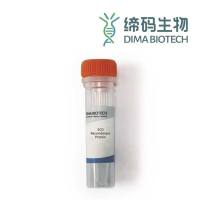Fractionation of mRNA Based on the Length of the Poly(A) Tail
互联网
互联网
相关产品推荐

Hemagglutinin/HA重组蛋白|Recombinant H1N1 (A/California/04/2009) HA0 Protein (full length)
¥1790

SIRPA/SIRPA蛋白Recombinant Human Tyrosine-protein phosphatase non-receptor type substrate 1 (SIRPA)重组蛋白Brain Ig-like molecule with tyrosine-based activation motifs蛋白
¥1344

mazF/mazF蛋白Recombinant S_t_a_phylococcus a_u_r_eus mRNA interferase MazF (mazF)重组蛋白Toxin MazF (mRNA interferase MazF)蛋白
¥2328

人CD8A重组蛋白/Human CD8A Acidic tail Protein, hFc Tag
¥673

Hemagglutinin/HA重组蛋白|Recombinant H3N2 (A/Switzerland/9715293/2013) HA0 Protein (full length)
¥1790
相关问答

